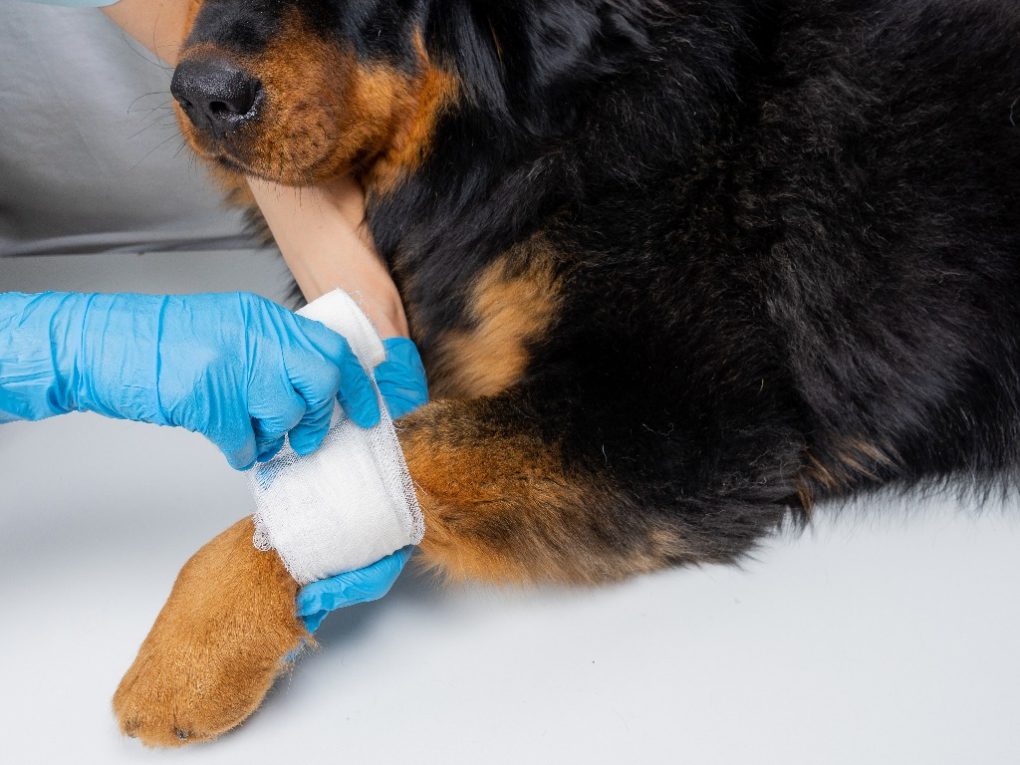Generally, glue traps aren’t poisonous to dogs. However, they pose other risks. If a dog steps on one, the sticky adhesive can cling to their paws. This causes irritation and possible injuries. Sometimes, dogs might even eat the glue. This can lead to stomach problems and other health concerns.
Dog owners shoudl be vigilant to keep their pets away from sticky glue traps. Consider placing traps where dogs can’t reach them. Explore safer pest control options.If using glue traps, supervise your dog closely. These actions protect your beloved canine companion.
The Risks of Glue traps for Dogs
Ingestion
Dogs might ingest glue traps if they chew on them or lick the sticky surface.These traps are very adhesive. If a dog eats a lot of the glue or trap material, it can create a sticky blockage in their digestive system.
This can lead to blockages in their digestive system. Symptoms include vomiting, diarrhea, stomach pain, and decreased appetite. these blockages are serious. They often need urgent vet care, possibly surgery.
The sticky substance in glue traps can cause irritation to a dog’s mouth, throat, and digestive system. Swallowing this adhesive may result in symptoms like excessive drooling, pawing at the mouth, gagging, or general discomfort.
The sticky substance can cling to the digestive system’s walls. This leads to inflammation,discomfort,and potential damage to the lining. Most glue traps are safe, but some use toxic baits to attract more pests. These baits can poison dogs if they eat them.
The specific toxins used depend on the targeted pests. These often include insecticides,rodenticides,or other chemicals. These substances are harmful to dogs if eaten. Ingesting poisoned bait can cause various symptoms. the symptoms depend on the poison type and amount. These symptoms include vomiting, diarrhea, weakness, tremors, seizures, and even organ failure.
Physical Injury
If a dog steps on a glue trap, the sticky adhesive instantly clings to their paws. When they attempt to free themselves, the glue can tug at their skin and fur. This can lead to cuts, scrapes, or even skin tears. Dogs might also step on the trap’s edges, potentially injuring their paws, nails, or legs.

Glue traps boast a powerful adhesive that readily ensnares a dog’s coat. A dog’s attempts to escape only worsen the situation, causing the glue to clump and tangle their fur. This struggle can inflict pain, pulling, and tearing of both fur and skin. Consequently, this may lead to skin injuries, cuts, or even patches of missing hair.
Dogs can accidentally get stuck on glue traps. The sticky adhesive can cling to their fur, especially on their chest, belly, or sides. When they struggle to free themselves, the glue can pull and tear their skin, causing pain and potential injury to the tissues underneath.
Dogs, in their struggle to escape, might compulsively lick, chew, or bite the glue trap or the ensnared areas of their body. This desperate act can cause additional harm, such as broken claws, lacerated skin, and hemorrhaging.
In severe instances, dogs might fight intensely to escape a glue trap. This struggle can lead to bone fractures or joint dislocations. The forceful thrashing and pulling can cause injuries,leading to trauma and possible lasting harm.
Psychological Distress
Dogs frequently enough experience fear and anxiety when stuck in glue traps. The strong adhesive causes pain and discomfort. A dog’s struggle to escape only increases its fear. Being trapped and unable to move is very distressing, leading to increased anxiety.
Dogs trapped in glue traps frequently enough suffer panic and intense stress. Being immobilized and unable to break free activates their fight-or-flight response. This results in a faster heart rate, rapid breathing, and elevated anxiety. The dog might also whine, bark, or vocalize in distress, displaying agitated and frantic behavior.

Dogs stuck in glue traps for too long might get depressed or show apathy.The stress, fear, and pain of being trapped can hurt their mental health. This can cause them to eat less, feel tired, become withdrawn, and lose interest in things they usually enjoy.
Glue traps can cause psychological distress in dogs, leading to behavioral changes. These changes may manifest as aggression or defensiveness. For exmaple, a dog might growl or snap if it feels threatened or trapped. Learn more about this behavior.
Dogs might try to escape glue traps. They may scratch, chew, or dig at the trap or nearby objects. Glue traps can cause psychological distress, harming a dog’s well-being. Intervention might potentially be needed to help the dog.
From my observations, dogs suffering emotionally from glue trap incidents require gentle handling. Consulting a vet or certified animal behaviorist is crucial for their mental and behavioral recovery.
Skin and Coat damage
Glue traps use a strong adhesive to catch pests. This sticky substance can be harmful to your dog’s skin and fur. If your dog touches a glue trap, the adhesive will stick tightly to their coat and skin.
Removing the adhesive can be tricky. It might cause fur to mat, clump, or tangle.Licking or grooming to remove it can make things worse. This could lead to more matting or fur damage. In severe cases, the adhesive may pull on the skin, causing pain and discomfort.
Adhesives can harm a dog’s fur, particularly if removal is tough. Fur can mat, tangle, or clump, becoming unsightly and hard to handle.Severely damaged coats might need shaving, stressing the dog and requiring regrowth time.
Glue traps can also cause dogs to lose hair. The sticky adhesive clings to their fur, and trying to remove it can pull the hair. This leads to hair breakage or hair being pulled out completely. This can create bald spots that take time to heal and might need a vet’s care.
Glue trap adhesives can irritate a dog’s skin. This irritation causes redness, swelling, and discomfort. The strong adhesive sticks tightly,potentially tearing the skin when a dog tries to escape. This struggle can lead to painful cuts, scrapes, or other skin damage.
Extended exposure to glue trap adhesive can trigger dermatitis or skin infections in dogs. The sticky substance disrupts the skin’s natural defenses. This disruption can lead to inflammation and bacterial or fungal growth. Secondary infections may also occur. These issues cause discomfort, itching, and skin lesions. Veterinary care might be necessary.
